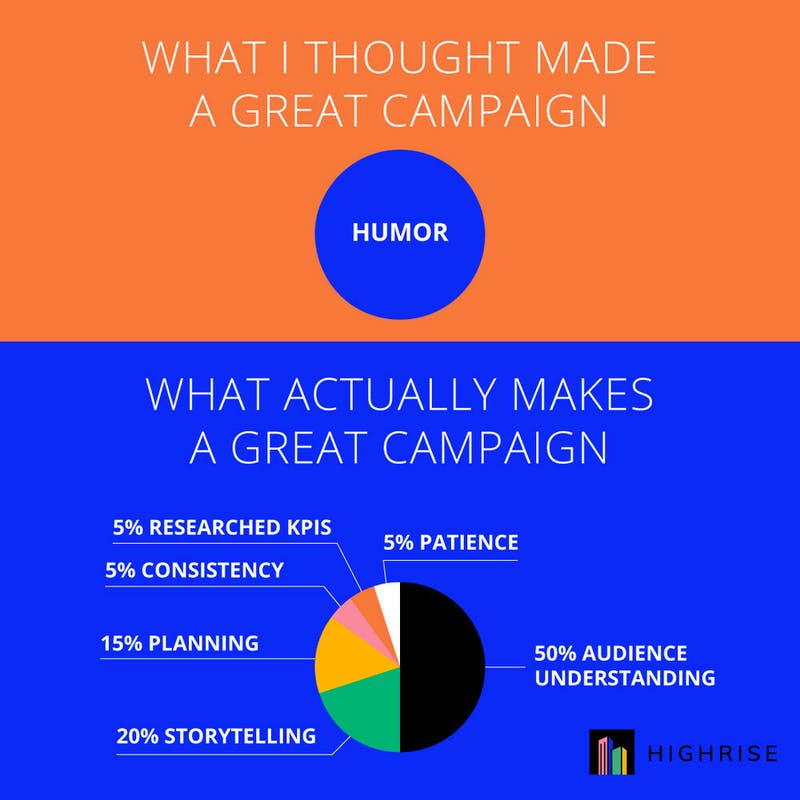
COMING AT YOU WEEK OF 4.27.21
Dan Pink’s strategy for persuading your audiience
Ingredients for a truly killer campaign
A round-up of latest news
Weekly catch up
The very important
- After stringing us along like our sophomore girlfriend, Apple officially announced that this week, yes THIS WEEK, they are releasing the iOS 14 update that will rock our world.
- Here’s how Facebook recommends preparing for the update.
- Here’s what TikTok advertisers should know about the update.
What the overachievers want to know
- No, Target ROAS and Target CPA aren’t disappearing. Here are the updates that are coming to bid strategies.
- Snapchat’s Q1 report makes us wonder if we’ve been underestimating it.
The fun and interesting
- Ann Hadley shares a case study where ungating content increased pageviews 143%, social followers 45%, and newsletter subscribers 55%. Oh, and she wrote a fictional anecdote highlighting where we often go wrong in acquiring leads. It was pretty hilarious.
- Disney (through ABC) made roughly $2 million for every 30 seconds of ads during the Oscars.
- Google used some of that ad space for a video featuring the topic of accessibility by focusing on a child of deaf adult(s) (CODA). Sometimes it’s hard to hate you, Google.
Ask yourself this
Is there a simple way to get my audience to do what I want?
Our success rides on getting our audience to act, or in other words, in our ability to persuade. We left Daniel Pink’s MasterClass with a bit of a middle-aged man crush on Dan and a hitchhiker’s backpack full of persuasive strategies. Here are a few.
Develop attunement.
The effective way to persuade people is also the empathetic way. Matt Kobach reminded us in his interview: “Don’t ask for favors!” Similarly, Dan says, “Find something that works for you and them.”
Here’s a quick exercise to help you identify your attunement level.
Step 1: Choose your dominant hand.
Step 2: With that hand, snap your fingers five times very quickly.
Step 3: Use your pointer finger to draw a capital E on your forehead.
When you drew the E, which way was it facing? Someone with strong attunement writes the E so whoever sits across from them can read it.
|
|
Show contrast in your marketing.
Rosser Reeves (a famous advertiser) is with a friend walking in Central Park. They look ahead and see a disheveled blind man asking for donations with a sign reading, “I am blind.” Then, as they get closer, they notice his cup for donations is practically empty.
Rosser turns to his friend and says, “Ya know, I could add four words to that sign and change that man’s fortune for the day.” His friend gestures to Rosser to go ahead and prove it. Rosser approaches the man, introduces himself, and writes four words at the top of his cardboard sign. “It is springtime and.”
The sign now read, “It is springtime and I am blind.”
Rosser and his friend found a nearby bench and watched as people began to drop donations in the once-empty cup. Before people saw a blind man, but now they compared this blind man to themselves who were enjoying a spring day.
This old advertising legend teaches us to ask, “Compared to what?”. Our offering is cheaper, compared to what? Our offering is more efficient, compared to what? Then, show the comparison.
Occasionally show contrast through small blemishes.
In a Stanford study, participants were shown an offering for hiking boots. One group was told all this great stuff about the boots. The other group was told the great stuff, but also was told that the boots were only offered in two colors. In the end, more people opted to buy boots when they heard about the small downside. 🧐
Dan thinks that’s the case because customers who hear the small blemish might think, “The downside is that I can’t pick from a ton of colors, but that is a small downside compared to this long list of great reasons to buy these boots.”
When showing contrast, remember attunement.
Which way did you draw that E in the exercise? Whether you’re writing copy for a new lead gen or if you’re asking for a long vacation, the higher your level of attunement, the more persuasive you’ll be.
Wordless wisdom
Amiright?

Did we cover the most important elements of a great campaign? Hit reply to tell us if there’s something we forgot.